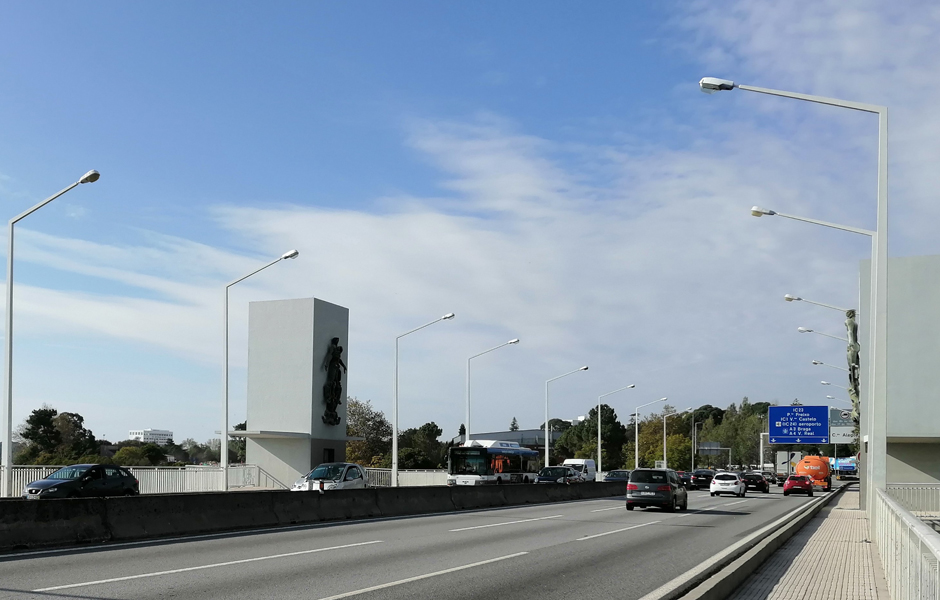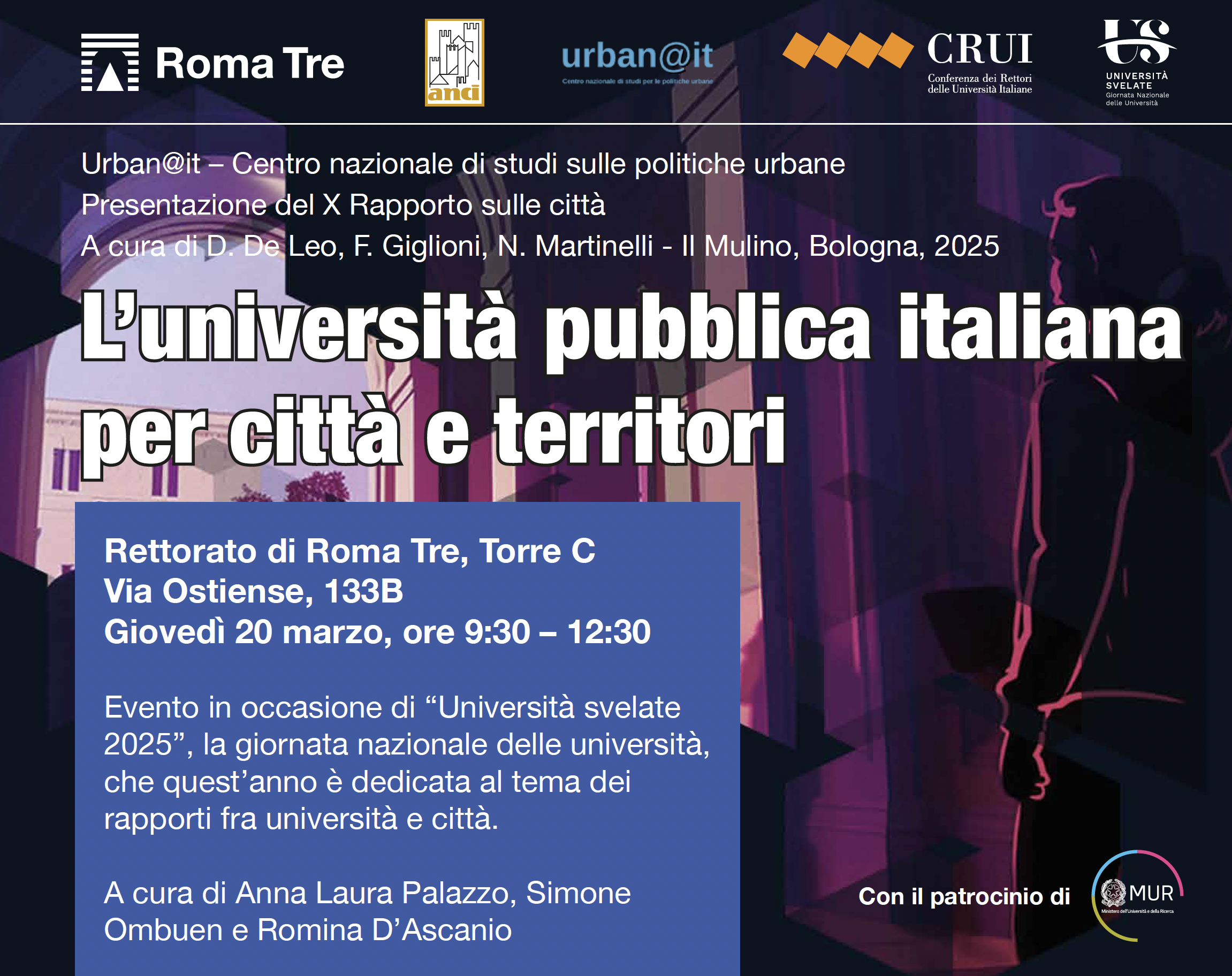The Car as a Castle amongst Castles

The Car as a Castle amongst Castles and mobility after Covid-19
Master, CEAU-MDT, Faculdade de Arquitectura da Universidade do Porto (FAUP)
A few months ago, I completed my master’s degree in Architecture at FAUP (the Porto school of Architecture), with Rui Braz Afonso as my thesis supervisor. It’s titled “The Car as a Castle amongst Castles” (translated), a take on the car as “your personal space amongst the personal spaces of others”. I studied the evolution of cities under the magnitude of the influence of the car being the ‘mobility tool’ of choice, through the loud threat of the environmental issues and, for the last 50 or so years, the political will changing in favour of the public (“group”, “collective”) transport. Comparing three different types of cities, in two different continents and three different ways of development of the “addiction to the car” – Los Angeles, as the American way of planning, living and “full on addiction” to the car; Milan as the “European way of planning”, on the cutting edge of innovation regarding mobility, with several (more, or less successful) solutions to contain traffic and pollution; Porto, as the Portuguese example and demonstration of “being late to the party”, with dated solutions and a constant search for bettering them –, I found it to be very hard to introduce the concept of collective transport in an increasingly individual society which lives their daily routines in an increasingly bigger territory. I also found this to be true regardless of the sheer size of the territory and country, the way it was designed and shaped, when it started being developed and the economical, energy and environmental crisis the world has gone through.
«The passion for the car – a symbol of mobility more than just an object or tool for mobility – and the fascination for speed, technology, development, allied to the dispersion of the cities’ functions, the de-centralization of them and consequent fragmentation of the space which used to be contained (or spread in an easily accessible way), and changing political, urbanistic, social and economic currents, caused (and were, in fact caused by as well) the evolution of the industry, which in turn created better cars and therefore aided in the propagation of the addiction to the car.» (Alves 2019, p. 105) 1
The uses of the city and the way to “enjoy” cities changed due to mobility – the concept of speed changed and circulating through cities became their main use. The increasing concerns with the environmental issues, mainly caused by the car and industry weren’t the only oppositions to individual mobility, and the trend of city design has long been to remove cars, to “collectivize” mobility or make it “lighter”. Jane Jacobs was one of the first to oppose the car’s monopoly over mobility and the urbanity generated by roads and streets:
«Streets in cities serve many purposes besides carrying vehicles; and city sidewaIks – the pedestrian parts of the streets – serve many purposes besides carrying pedestrians. These uses are bound up with circulation but are not identical with it and in their own right they are at least as basic as circulation to the proper workings of cities.» (Jacobs 1961, p. 29) 2
Forcing people to abandon their preferred ways of moving is a “social no”, it is a form of “dictating how to” and people will find a way to contradict the procedures. The attempts to demote people from using the car by restricting/making it more difficult to use or banning it have evolved and became a bigger part of how urban planning is developed over the second half of the 20th century. Cycle-lanes, larger sidewalks, less parking, more squares and parks, greener streets are all part of city plans and the new ways of projecting the future of the usage of the city. Yet, the car stands as the preferred tool for day-to-day routines – and the individualization of society and consequent course of life and territorial changes are the reasons for this, aided by several factors. The economy is a big part in this, as the industry finds ways to keep people interested in buying, upgrading, changing their cars. The ‘cult status’ of the car has decreased, surely, but it is still a symbol of freedom, of mobility and a social and economic display of power.
«The car, even before the house, is the symbol of a social promotion, of freedom from others, yet it seems to be a social need for all, as food and sleep. Here’s one of the most curious aspects of our time, the collective necessity of individual transport.» (Auzelle 1960, p. 76) 3
With the Covid-19/Coronavirus pandemic, there’s a renewed case for the individual mobility and, mainly, for the car. Confining several dozens of humans in a metal box for transport is not viable for our society’s procedures of life and even less so during a pandemic. Richard Sennett presented the problem and a possible solution:
«A more problematic question for density is transport. The advantage of public transport is reuniting a bigger number of travellers, but this is not a hygienic way of densifying. » (Sennett 2020) 4 « The best proposal I’ve heard of for the richer cities was by Anne Hidalgo, the mayoress of Paris: creating nodules of concentration, which she calls “15 minute cities”. In these, the people can arrive by bicycle or on foot in 15 minutes to a centre which doesn’t need public transport, which can be very dangerous in cases like the one living now. It’s a huge change.» (Sennett 2020) 5 The bicycle and other light means of transportation still leave you exposed to some contact with other people though – as well as the problem with having more condensation from heavier breath and of sweating through your mask, rendering it useless after a shorter period of time 6. The car is the safest way to travel now, if you are alone in it. It is your own little bubble, your own “Castle amongst other people’s Castles”. The “way forward” as “reducing the pollution caused by cars”, has then been sort of “demystified”.
Does this mean we should all be driving, alone, everywhere, make parking easier and free, cancel all toal-road payments and stop collective transports and light mobility? No, of course not. But, for the time being at least, we should ease up on the “no-car policies”, for our own safety – and when it is safe again, then yes, resume the “control” of car usage and the search for ways to control pollution, searching for a way to travel safely, sanitarily and whilst being environmentally ‘friendly’. Should we think of these “15 minute cities” as a way to start modifying the urban centers? Should we try to find a way to “reform” the collective means of transport? Or is the car industry and its evolution the answer to the mobility issues?
As a society and as humankind, we’ve taken a huge step towards the future during this Covid-19 pandemic, even though everything was stopped for a bit. The sudden realization that we can somewhat function without as much movement and travelling, can cause an unpredictable, hard future. Some changes to the current mobility could be welcome and maybe this was the spark needed to start them.
Notes
1 Alves, Rui. (2019) “O Carro como Castelo entre Castelos. Os sinais do presente para o desenho da cidade no futuro. Porto, Milão, Los Angeles. O Vício do Carro.” Capítulo 7, “Síntese”, p. 105. FAUP. Translated and adapted by the author.
2 Jacobs, Jane. (1961) “The Death and Life of Great American Cities”. Nova Iorque. (p. 29)
3 Auzelle, Robert. (1960) “A cidade e o automóvel”. Paris. Translated by the author of this article (p. 76).
4 Sennett, Richard. (2020) Article on the newspaper “El País” (consulted on): https://elpais.com/especiales/2020/coronavirus-covid-19/predicciones/hacia-ciudades-de-15-minutos/ . Translated and adapted by the author of this article.
5 Sennett, Richard. (2020) Article on the newspaper “El País” (consulted on): https://elpais.com/ideas/2020-05-09/richard-sennett-el-liberalismo-ha-debilitado-nuestra-red-de-salvacion.html. Translated and adapted by the author of this article.
6 Information regarding the usage of masks and how to maintain them: https://bmjopen.bmj.com/content/5/4/e006577.short ;
https://www.forbes.com/sites/tarahaelle/2020/04/07/everything-you-need-to-know-about-wearing-masks-until-the-cdc-tells-us-more/#559a6c454bdb.
Images
Cover: Arrábida bridge, before rush hour. The buses cross the Douro river on the motorway, with individual traffic; the road transports are the most important in Porto (photo by the author, Sept. 2019)
Fig. 1: Milano Centrale, during lunch hour; in Milan the public transport on rails is a very big part of mobility, with the trains, Metro and even trams being highly used (photo by the author, Dec. 2017)
Fig. 2: Private, motorized, road transports are the most used in LA, by a long way, even with the incentive of lighter means (picture from article on “LA Mag”: https://www.lamag.com/citythinkblog/myfigueroa-bike-lane/ )









